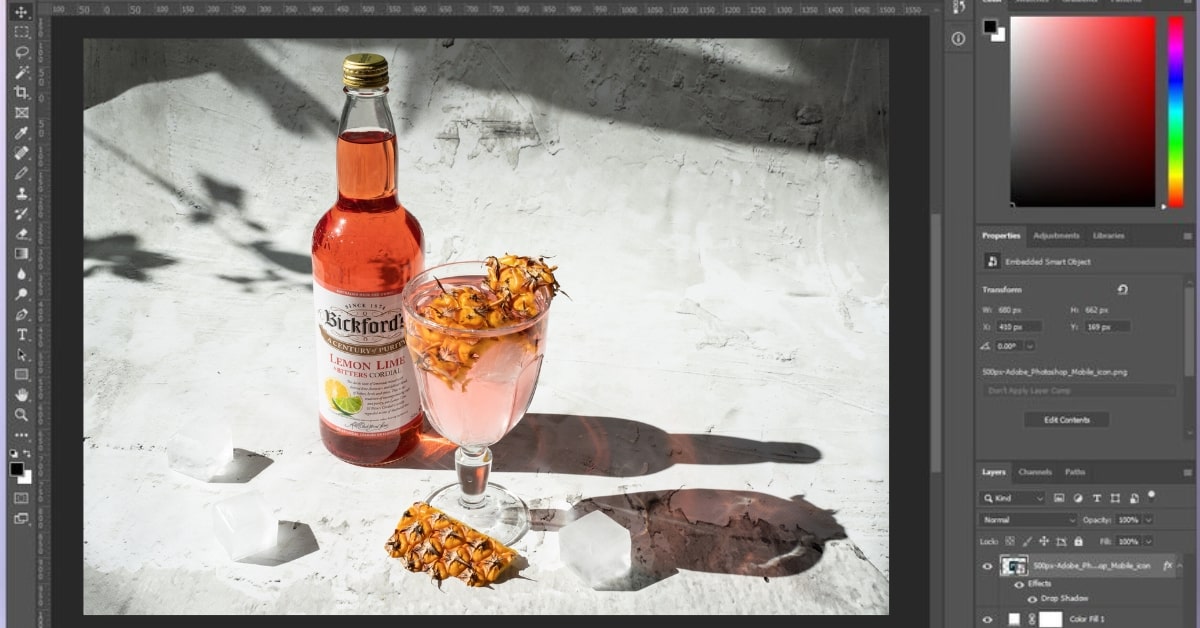In the realm of digital design and photo editing, creating natural-looking shadows in Photoshop adds depth, realism, and a touch of authenticity to images. Understanding the techniques and tools available within Photoshop can empower designers and photographers to craft lifelike shadows that seamlessly integrate with their compositions. This article delves into the art of creating natural shadows in Photoshop, unveiling the methods, tips, and tricks for achieving realistic shadow effects.
Mastering Natural Shadow Creation in Photoshop
- Purpose of Natural Shadows:
- Natural shadows in Photoshop replicate real-world lighting conditions, adding depth and dimension to elements within an image, making them appear grounded and lifelike.
- Emulating Realism:
- The goal is to mimic natural light sources, angles, and intensity to create shadows that align with the visual narrative of the image, enhancing its believability.
- Tools and Techniques:
- Photoshop offers a range of tools and techniques, such as layer adjustments, brushes, and filters, that can be utilized to create convincing natural shadows.
Methods for Creating Natural Shadows
- Utilizing Layer Styles and Effects:
- Photoshop’s Layer Styles provide options like Drop Shadow and Inner Shadow, allowing users to adjust parameters such as opacity, angle, and size for natural shadow effects.
- Painting Shadows with Brushes:
- Using soft-edged brushes set to low opacity, manually paint shadows onto separate layers, adjusting the blending modes and opacity for a realistic result.
- Gradient and Blending Techniques:
- Employing gradients and blending modes, such as Multiply, Overlay, or Soft Light, on dedicated shadow layers can simulate the gradual transition of light to shadow.
Tips for Realistic Natural Shadow Creation
- Observation and Reference:
- Study real-world lighting and shadow patterns to understand how light interacts with objects in different scenarios, aiding in realistic shadow creation.
- Consistency with Light Source:
- Maintain consistency with the established light source within the image to ensure shadows align with the direction and intensity of the light.
- Opacity and Softness Adjustment:
- Play with the opacity and softness of shadows to match the surface texture and distance of the casting object, ensuring a natural and seamless appearance.
Conclusion
Mastering the creation of natural shadows in Photoshop involves a blend of technical knowledge, observation, and creative experimentation. By exploring the diverse tools, methods, and best practices outlined in this guide, designers and photographers can elevate their compositions, infusing them with realism, depth, and a compelling visual narrative through the artful use of natural shadows.
FAQs
Can I create natural shadows for complex objects in Photoshop?
Yes, by employing layer masks, adjustments, and careful brushwork, Photoshop enables the creation of natural shadows for various objects, including complex ones.
How can I ensure the shadows match the perspective of the image?
Consider the perspective and angles within the image. Use the Transform tools in Photoshop to adjust the shadow’s shape and orientation accordingly.
Are there specific settings for creating shadows in Photoshop for different lighting conditions?
Yes, the settings for shadow creation may vary based on the lighting conditions within the image. Experimentation and adjustment are key to achieving the desired effect.
Can I create natural shadows for images with multiple light sources?
Yes, by creating separate shadow layers and adjusting their properties, you can simulate multiple light sources and their corresponding shadows within Photoshop.
This page was last edited on 27 February 2024, at 2:21 pm
